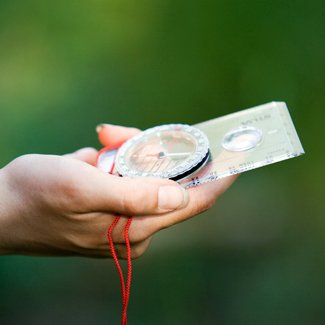Sense of direction can be learned

BLINDFOLD A GOLDEN HAMSTER and take it on a meandering route away from its nest then let it go, and it can scurry straight home. Other animals, like geese and toads, and especially pigeons, are experts when it comes to sensing direction. People don’t perform so well. However, new work by Australian scientists shows that part of our brain is in fact dedicated to detecting the direction we’re heading in.
“Our study provides not only the first evidence for a brain region sensitive to heading direction in people, but also its precise location in the brain,” says Oliver Baumann of the Queensland Brain Institue, who led the work.
Oliver and colleague Jason Mattingley asked six women and seven men to navigate their way around a computer-generated maze. This maze consisted of a grid of alleys with a different symbol at the end of each one, which the volunteers learned to use as landmarks.
The researchers then measured the volunteers’ brain activity using a scanning technique called functional magnetic resonance imaging (fMRI) while showing them pictures of the symbols, each of which was associated with heading in one of four directions.
They noticed different patterns of activity in a particular region, towards the back of the brain, called the medial parietal cortex, depending on which direction the volunteers thought they were heading in.
Unlike a pigeon say, which can sense the Earth’s magnetic field to help it navigate, the volunteers’ sense of direction came largely from getting to know the location of the landmarks.
Mastering sense of direction
The work “provides a significant new insight into how the brain maps the world around us,” says Mike Nicholls, a neuroscientist at the University of Melbourne. “It’s also intriguing that dementia patients, who often show degeneration of their medial parietal lobe, experience problems with navigation, such as finding their car in a supermarket car-park.
While people generally aren’t as good as many animals at sensing direction, we can learn to improve, adds Arne Ekstrom, an expert on human navigation at the University of California, Davis, US.
“We find ways to ‘cheat’ – using GPS, for example. But army recruits can learn to master orienteering based on head direction, a perception of the body’s movement and orientation, and counting steps. So it is a system we possess; it is just under-utilised in us, probably because we don’t need it for our current environment.”
The new work is published in the Journal of Neuroscience.

